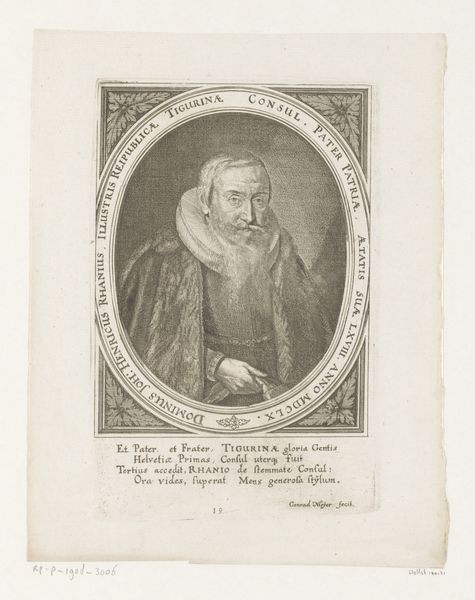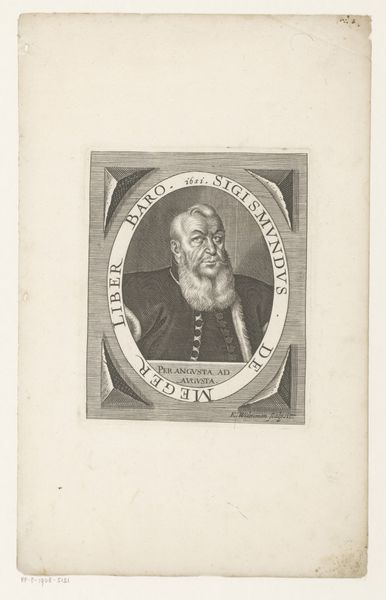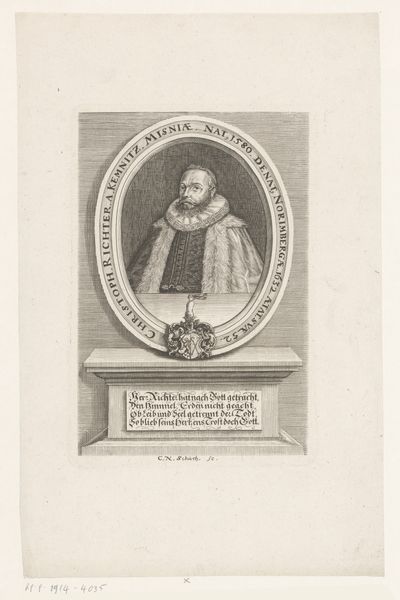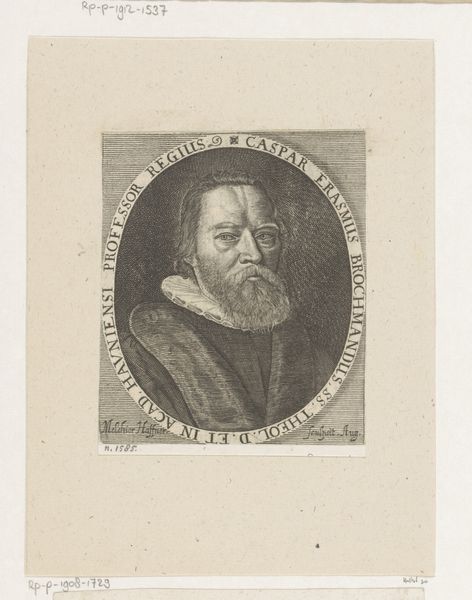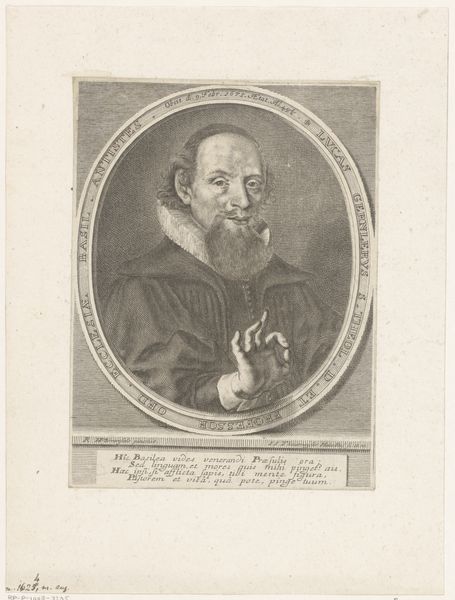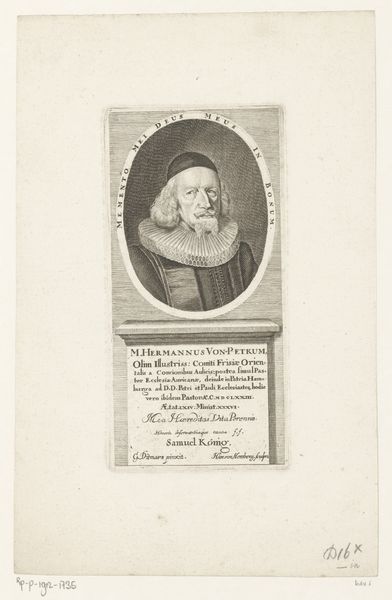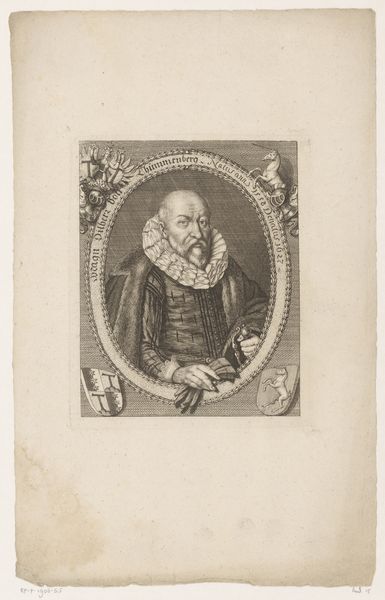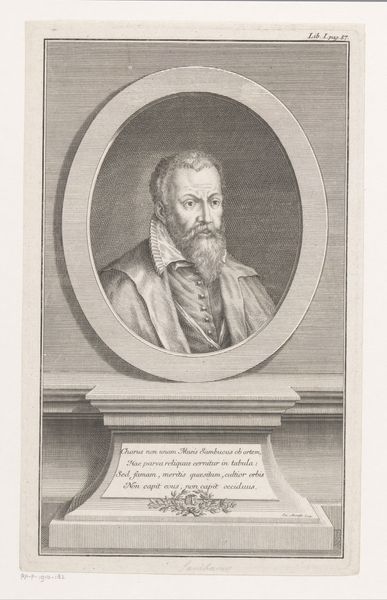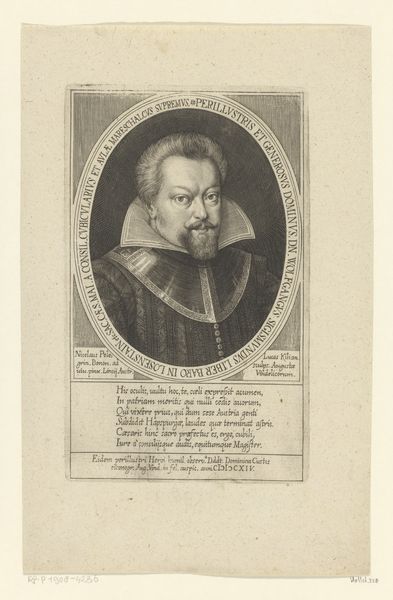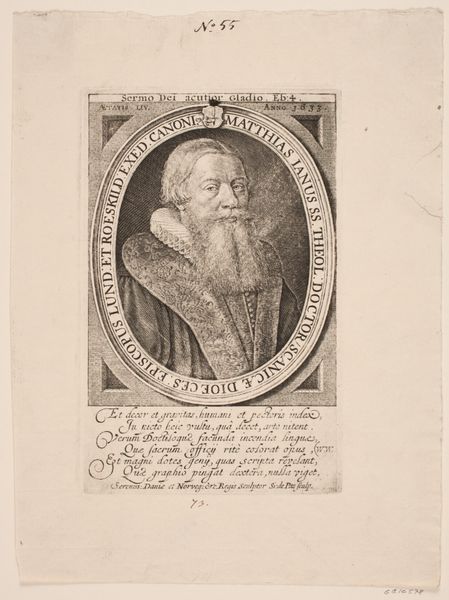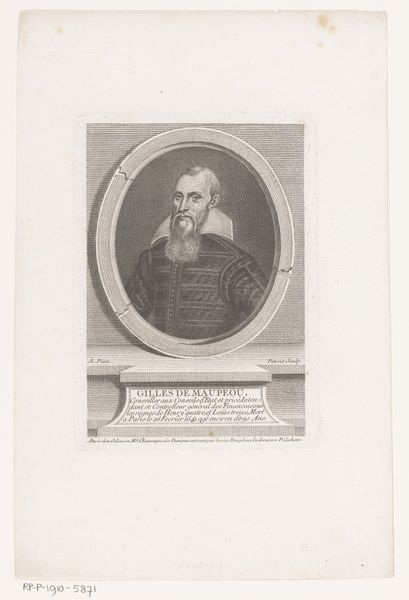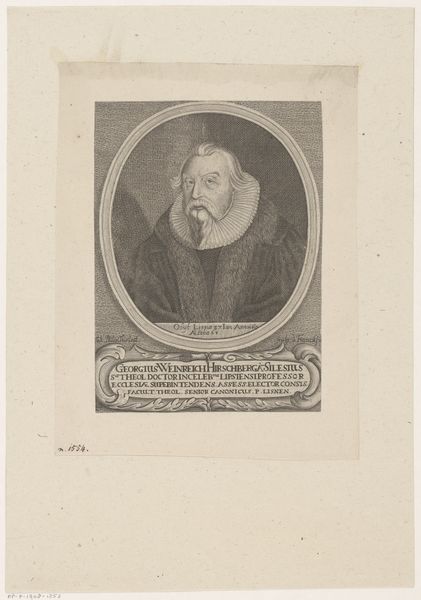
print, engraving
#
portrait
#
aged paper
#
toned paper
#
baroque
# print
#
light coloured
#
old engraving style
#
engraving
Dimensions: height 150 mm, width 110 mm
Copyright: Rijks Museum: Open Domain
Editor: We’re looking at Etienne Fessard’s "Portrait of Philippe du Plessis-Mornay" from 1755, it's an engraving on laid paper held in the Rijksmuseum collection. The detailing of his fur collar is incredible, especially considering it's an engraving, but something about the oval frame feels…detached from the figure within. What do you make of this portrait? Curator: Detached...yes, a fitting word. Perhaps Fessard was grappling with representing not just the *likeness* of Plessis-Mornay but his legacy as a statesman and a writer amidst religious wars. Do you feel a sense of stoicism, almost weariness, in his gaze? Engravings like this served as vital forms of visual media back then, circulating images and solidifying reputations. I imagine copies being snatched up across Europe, each owner tracing the lines of his face and feeling, perhaps, a connection to the man. Editor: I do see weariness in his eyes now that you mention it! Almost as if he’s carrying a great burden. Curator: And notice the ornate script below – a testament to his governance and birth. All designed to further burnish his reputation. Consider this: What story is Fessard deliberately crafting through this print? Is it just of a man, or something more? Editor: More, definitely more. A symbol, almost like propaganda, I suppose? A way of controlling how people see him and remember him. Curator: Precisely. And what better medium than the readily reproducible print? The Baroque loved a bit of theatricality, didn't it? This portrait then exists as both art object and...dare I say...historical spin-doctoring. What a legacy, eh? Editor: It really changes how I see it. It's not just an old print; it's a carefully constructed statement about power and image, reproduced for the masses!
Comments
No comments
Be the first to comment and join the conversation on the ultimate creative platform.
